When mdf is preferable..
I have come across this situation often. The potential customer wants a...... 'fitted wardrobe say' and, might like a hardwood wardrobe, but doesn't want to spend too much or they maybe on a budget, and who isn't.
So when the question of which material arises, the customer will usually ask if I can use pine to make said wardrobe. My usual answer is to ask them a question in reply, which is, do you require a pine/wood finish or, is a painted finish required.
The reason for answering a question with a question is, if a pine/wood finish is required then pine (or redwood as it is commonly known in the trade) is most likely the cheapest option. Although I am confident in saying that, cheapest is almost universally never the 'best' option, in any given circumstance, as there are usually a number of negatives with 'cheap', more on pine/cheap later.
But if a painted finish is required, then pine is not the only cheap option, or best option.
Yep you guessed it, this is where Mdf can be preferable.
But let's consider the pine option some more, pine or redwood is readily available and relatively cheap and works/machines ok but, it can be problematic while machining, if there are a lot of knots or a high degree of resin present.
I have come across this situation often. The potential customer wants a...... 'fitted wardrobe say' and, might like a hardwood wardrobe, but doesn't want to spend too much or they maybe on a budget, and who isn't.
So when the question of which material arises, the customer will usually ask if I can use pine to make said wardrobe. My usual answer is to ask them a question in reply, which is, do you require a pine/wood finish or, is a painted finish required.
The reason for answering a question with a question is, if a pine/wood finish is required then pine (or redwood as it is commonly known in the trade) is most likely the cheapest option. Although I am confident in saying that, cheapest is almost universally never the 'best' option, in any given circumstance, as there are usually a number of negatives with 'cheap', more on pine/cheap later.
But if a painted finish is required, then pine is not the only cheap option, or best option.
Yep you guessed it, this is where Mdf can be preferable.
But let's consider the pine option some more, pine or redwood is readily available and relatively cheap and works/machines ok but, it can be problematic while machining, if there are a lot of knots or a high degree of resin present.
I should say that at this point that, any trades person worth their salt will do their upmost to pick timber that has the least amount of defects as possible. So as a rule when I pick my timber I am mostly looking out for knots, twists, shakes or cracks, resin bleeds and misshapen or bent timber, there can be other defects, but these are the main ones to be aware of. The problem here is that you cannot always see these potential defects on the surface of a rough sawn piece of wood, but I know that if I can avoid these pitfalls I will have fewer problems making the wardrobe. Even with the best will in the world there will be knots present, and you only really find out if these knots are 'dry' or 'wet' after the machining has been completed.
As a rule, any knot or dark zone on softwood should be treated with two coats of knotting solution, once it has been sanded, so in theory this will stop any resin bleeding through the finished paintwork. But there is no guarantee this will be successful, and after a period of months the paintwork may well discolour where seemingly dry knots are located.
As a rule, any knot or dark zone on softwood should be treated with two coats of knotting solution, once it has been sanded, so in theory this will stop any resin bleeding through the finished paintwork. But there is no guarantee this will be successful, and after a period of months the paintwork may well discolour where seemingly dry knots are located.
Although pine is relatively stable, it can still move.
What do I mean by 'move'? A common term in the trade, which means the movement of timber by the swelling and contracting of spindle shaped cells along the grain of the wood. Which might mean a door would start to get difficult to open in the winter as it expands across the width of the door or twist slightly so you get one corner of the door slightly proud of the door frame, which will often mean the door refuses to shut. So all timber is likely to swell in more humid conditions and contract in dry hot conditions, and sometimes the effects can be quite noticeable which require action.
Going back to mdf, generally I use 22mm thick MR mdf for all my frames and door frames, this results in nice solid doors and frames, the 'MR' bit means Moisture Resistant. Which it is, and also MR mdf is a tad denser than normal mdf and because of that the 'end grain' (as it were), sands to a better finish.
There is no planning to do, only the machining of the joints, which work just as well as a pine joint or oak joint, but machine easier and with zero break out.
Obviously there are no knots to contend with, nor cracks or shakes, resin bleeds and as long as the mdf has been stored flat, there is no twisting or bending to worry about. Mdf excepts paint very well and once the job is done you have no fear of those knots blemishing your paintwork six months later. Mdf sands the same as any wood, I sand all the sharp corners off just like I would, if I was using oak or softwood, and once sanded mdf gives a very smooth finish, ready for painting.
So thats when and why Mdf is preferable.
What do I mean by 'move'? A common term in the trade, which means the movement of timber by the swelling and contracting of spindle shaped cells along the grain of the wood. Which might mean a door would start to get difficult to open in the winter as it expands across the width of the door or twist slightly so you get one corner of the door slightly proud of the door frame, which will often mean the door refuses to shut. So all timber is likely to swell in more humid conditions and contract in dry hot conditions, and sometimes the effects can be quite noticeable which require action.
Going back to mdf, generally I use 22mm thick MR mdf for all my frames and door frames, this results in nice solid doors and frames, the 'MR' bit means Moisture Resistant. Which it is, and also MR mdf is a tad denser than normal mdf and because of that the 'end grain' (as it were), sands to a better finish.
There is no planning to do, only the machining of the joints, which work just as well as a pine joint or oak joint, but machine easier and with zero break out.
Obviously there are no knots to contend with, nor cracks or shakes, resin bleeds and as long as the mdf has been stored flat, there is no twisting or bending to worry about. Mdf excepts paint very well and once the job is done you have no fear of those knots blemishing your paintwork six months later. Mdf sands the same as any wood, I sand all the sharp corners off just like I would, if I was using oak or softwood, and once sanded mdf gives a very smooth finish, ready for painting.
So thats when and why Mdf is preferable.

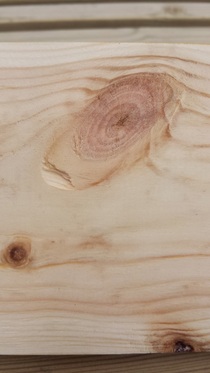
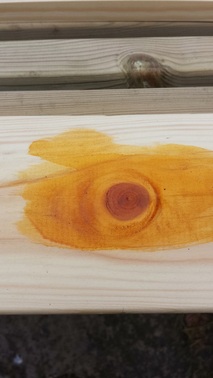
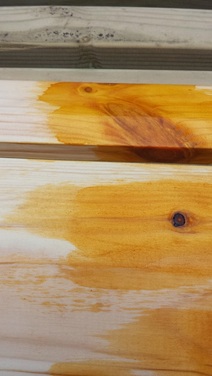
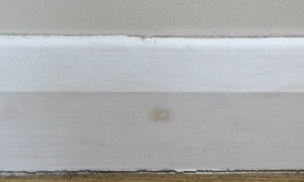
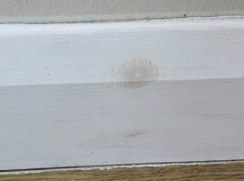
 RSS Feed
RSS Feed
